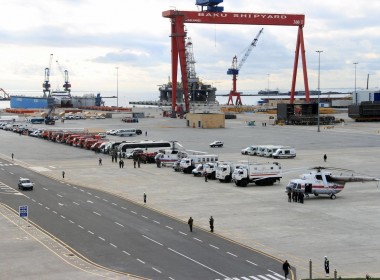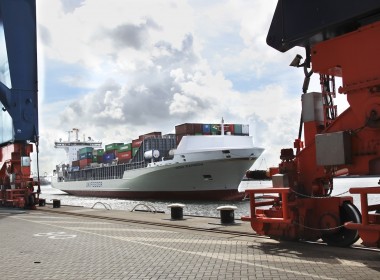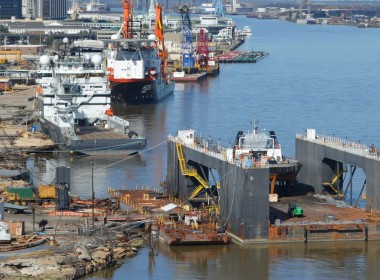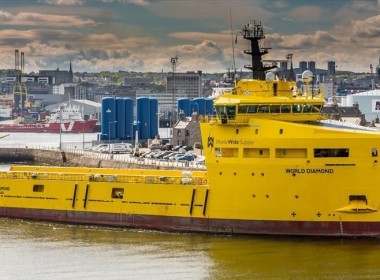COLUMN | International Safety Management Code failures [The Wet Detective]

It is 30 years since the Herald of Free Enterprise disaster hastened the introduction of the ISM Code, which was adopted in 1993 by resolution A.741(18) at the IMO and entered into force on July 1, 1998. For some it seems like it’s been around for an age, particularly those who have to fight with the volumes of requisite documentation.
The code’s origins go back to the late 1980s, when there was mounting concern about poor management standards in shipping. Investigations into accidents revealed major errors on the part of shipping company managements. In 1987 the IMO Assembly adopted resolution A.596(15), which called upon the Maritime Safety Committee to develop guidelines concerning shore-based management to ensure the safe operation of Ro-Ro passenger ferries.
Efthimios E. Mitropoulos, IMO Secretary-General Emeritus, considers its implementation to have been highly successful, with beneficial impact on maritime safety and pollution prevention. Capt. Kuba Szymanski, Secretary General of InterManager also believes that shipping’s safety record has been considerably improved stating that, “In 2008 with a global fleet of 40,000 ships, 130 ships sank; in 2016, with a global fleet of 80,000 ships, less than 100 ships sank.”
Colin Gillespie, Deputy Director of Loss Prevention, the North of England P&I Club, however, noted that, “… while the ISM Code has led to a focus on systems and procedures, it is not as successful in the active promotion of safety behaviour.”
Whilst I agree that ISM has contributed to improving shipping safety, I believe there are still many shortcomings in the system and its implementation. I also believe that there are several other factors that may have contributed more to improving safety standards at sea.
Personal experience, and that of other fellow marine consultants, surveyors and inspectors, has highlighted shortcomings in the system from its inception to implementation.
When first mooted, it was intended that ISM systems should be independently audited on behalf of flag states by those persons with specific training, skills and experience in technical, operational and management aspects of shipping.
A quadruple conflict of interest
In the early 90s many marine consultants, having previously worked for companies that already had such systems in place, saw an opportunity to help others establish ISM systems, by writing their manuals and procedures for example.
However, various classification societies also saw an opportunity and offered their services. Several started up separate companies to give the impression of separation, as their own company would be certifying the systems they had implemented. There was also a shortage of qualified and experienced auditors so the classification societies then set up training for their own surveyors to become auditors. They then certified them as ISM lead auditors to audit, amongst other things, Class compliance.
The code requires that a shipowner have its ships audited twice and the management audited every year during the five-year Class ISM SMC and DOC validity. Many understood this to mean that independent auditors appointed by the flag state would carry out the audits. However, Class saw this as a threat and, shortly before implementation, IACS canvassed all flag states to delegate Class to carry out the auditing. This, despite there being at least one ISO 9000-certified organisation with qualified, certified and experienced independent marine auditors.
This means that Class audits the ISM systems it has implemented on vessels classed by them using auditors trained and certified by the same society – a quadruple conflict of interest. Hands up those who believe that in such a situation there will be independent and objective auditing.
With the need for the flag state to be involved, the previous single unbreakable bond between owner and Class became an unbreakable love triangle between owner, Class and flag state. Many believe this to be because each is tied financially to the others: that is, that owners pay Class and the flag state for their services. Many believe that the original “independent” auditing aim would have had more effect, as financial and commercial pressure can be applied by sub-standard owners on the other two.
“It is noticeable that ISM auditors are not following through on this”
Personal experience and of other surveyors carrying out various ship inspections have shown that there are often glaring deficiencies that have not been raised by Class ISM auditors as nonconformities. For those that have been found and recorded, plenty of time is given for the defect to be rectified.
Those of us who are qualified and certified independent auditors have occasionally been appointed by non-IACS classification societies to carry out ISM audits. We apply ourselves diligently and in line with the code only to be informed that we are over-zealous and have found too much “trivial” non-conformity.
It is clear that the substandard operators have not understood the aim of the code, which is continuous improvement. The Ship Safety Committee (SSC) is one of the most important tools in this aspect, ultimately providing feedback to managers, owners, governments and the IMO. Masters are always keen to point out that they have no accidents, incidents or near misses to report. However, when the medical logbook is checked there are numerous injuries that have recently been treated. It is noticeable that ISM auditors are not following through on this.
One of the other areas of concern is that of crew familiarisation, particularly during the handover between crews when a vessel is sold to a new owner. The code states that there should be sufficient and adequate procedures in place for familiarisation when crewmembers join a vessel. When vessels are taken over by new owners, a new ISM DOC is immediately issued. However, all information on the vessel will either have been removed or destroyed using killer software on hard disks. This means that the crew have to learn about their new ship from scratch before it sails only hours later. Why has SOLAS not yet addressed this problem?
“In my opinion, and that of many others, hitting the bad boys in the pocket has been more effective”
So, what of the other organisations involved in ship inspections, like PSC, P&I clubs, RightShip, SIRE and OVID? Thirteen P&I clubs make up the International Group (IG) providing P&I cover for approximately 90 per cent of the world’s ocean-going tonnage. Thirteen others provide P&I services for specific vessel types/sizes or are funded in different ways, such as fixed premiums instead of annual calls.
When an owner “enters” their vessel(s) into a club an entry condition survey is required by a club-appointed independent marine surveyor within six months of entry. A follow-up condition survey will be carried out when defects have been found.
The entry survey is paid for by the club, the follow-up surveys, of which there may be several, by the owner. At each follow-up survey the surveyor checks the previous defects but can also add any others they have seen. This means that the defect list can increase instead of decrease. After several follow-ups the owner may realise that this is becoming expensive and eventually rectifies the defects.
The P&I surveyor is often caught between the vessel owner and the managers that have appointed him to inspect the club’s vessels. An excellent bedside manner is thus essential, particularly when a vessel’s master puts every obstacle in the surveyor’s way (in one example a master held a plywood board up in front of a defect being photographed.)
Apart from warranties applied to an offending vessel, the only major sanction is to throw the ship and owner out of the club. However, this can only be done at the renewal date of February 20. In my opinion, and that of many others, hitting the bad boys in the pocket has been more effective.
“A poor record can significantly affect the vessel’s earning capacity.”
The Memorandum of Understanding on Port State Control was signed in January 1982 by 14 (now 27) European countries at a Ministerial Conference held in Paris, France. It entered into operation on July 1, 1982.
The Memorandum of Understanding on Port State Control in the Asia-Pacific Region, known as the Tokyo MOU, was subsequently signed and adopted by eighteen maritime authorities in the region on December 1, 1993, coming into operation on April 1, 1994.
Their literature states that, “PSC provides an effective control mechanism to enhance the safety of shipping, the protection of the marine environment and securing adequate working and living conditions on board ships.”
Port State Control Inspectors (PSCI) are seen by many as the policemen of shipping. They have the respect of many shipping professionals who wish to see safe shipping operations. Defects found on board a ship are recorded and a list issued to the master with a time limit for them to be rectified. In the case of more significant defects the vessel may be detained until defects are rectified to the satisfaction of the PSCI.
A database is maintained and vessels selected for inspection based on various factors, eg, reports from the master, crew, a pilot, port authorities, or a previous unsatisfactory history. If the vessel is detained, the owner will lose freight earning time and incur additional port expenses, thereby hitting the substandard owner in the pocket. The Equasis website publishes such information. A poor record can significantly affect the vessel’s earning capacity.
“The ship was cleared for departure without any further problems.”
There is good and bad in everything and PSCIs are no different. They can be thorough in some ports and corrupt in others. A classic example of this is the case of a Hong Kong-registered and -managed bulk carrier making ready to sail from a South Korean port.
The RightShip inspector had just completed his two-day inspection when two well-dressed PSCIs boarded. Whilst on their way to the master’s cabin, gangway security called and reported that the two had refused to show their identity documents. As soon as they sat down in the master’s cabin they started smoking, there being no-smoking signs everywhere. This was pointed out to them but they refused to extinguish their cigarettes.
They were then asked to provide their IDs, which they refused. It was pointed out to them that if the master did not do so he could be in contravention of the ISPS code and the ship likely to receive a defect. When they were asked to leave the vessel they immediately provided their ID. The vessel’s superintendent and the RightShip inspector left the vessel to travel to Seoul only to be informed during the journey that the vessel had been detained. The RightShip inspector spoke with the PSCIs, informing them that he had their photographs and ID details and would be reporting them to the Tokyo MoU authorities. The ship was cleared for departure without any further problems.
“Those who have carried out both P&I Club and RightShip condition surveys cannot fail to notice the differences between the two.”
In 2001, RightShip was formed in Melbourne, Australia, by BHP and Rio Tinto with Cargill becoming an equal equity partner in 2006. These three companies are the largest ship chartering organisations. RightShip was formed to improve dry bulk safety and quality standards and draw on the significant ship vetting expertise of global commodity companies BHP and Rio Tinto.
Eighty five percent of the RightShip vetting consists of a shoreside paper based analysis of the vessel’s Class and Port State records together with the vessel’s ownership, P&I and flag state history. A thorough physical inspection is carried out over a one- to two-day period, depending on vessel size, which actually contributes only 15 per cent to the total vetting process.
Owners and charterers that subscribe can access the Rightship system (Qi) but inspections information remains strictly confidential between owners/manager and Rightship information only being shared when written consent is given. RightShip Qi, the online vetting platform, utilises big data, predictive analytics and real-time risk assessments.
Vessels are given a one- to five-star rating, five stars being a vessel considered to be in excellent condition with no risks for charterers. The star rating is actually a reflection of the vessel’s likelihood of having an incident in the next 12 months, but this fact tends to be overlooked by many who view it as a quality rating.
The number of charters and rates earned by a vessel tend to be reflected in the RightShip star rating attained. SIRE (established in 1993) and OVID (established in 2009) are schemes that maintain a similar database for tankers and offshore vessels respectively.
“The issued list of defects will often result in a lively debate.”
Those who have carried out both P&I Club and RightShip condition surveys cannot fail to notice the differences between the two. For the P&I survey the surveyor will need to make his own way to the vessel, often experiencing difficulties with the local agents, and having to carry his own equipment up the gangway and to the master’s cabin. He will be lucky to get full cooperation and/or a decent lunch on board. Indifference to the issued list of defects is notable.
For the RightShip inspection the surveyor will often be provided with transport from his hotel to the agents’ offices and then to the vessel. Crewmembers will then carry his equipment up to the master’s cabin. Total cooperation is provided and often a five-star lunch which has been brought on board for the inspector only! There have also been times when “gifts” have been offered, which are swiftly rejected by the inspector.
The issued list of defects will often result in a lively debate. Some superintendents will have several of the defects rectified before the closing meeting on the second day to reduce the size of the defect list. The reason? The RightShip star rating reflects on the vessel’s ability to earn freight, particularly for higher value cargoes.
It is also interesting to report that Filipino crews have long been aware that the P&I Club and RightShip inspectors are on board to look after their interests with respect to the MLC, often pointing out defects to the inspector. Question is, is this a form of “self-policing”?
What is the verdict thirty years on? It appears that those who don’t need the ISM system are applying it diligently whilst those that need it are only paying lip service to it, but the jury is still out…







